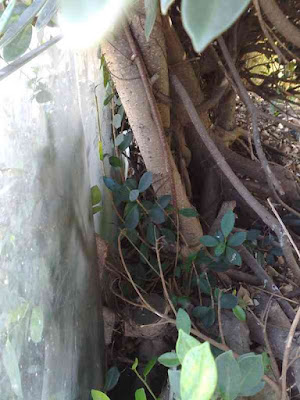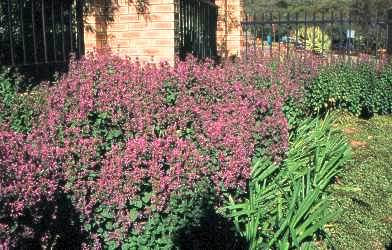The garden was once a simple but attractive foreground to these spectacular views.
The garden is probably about 20 years old now, but there was some careful thought that was put into the planning of it initially, with some good ideas to keep in mind in the planning of any roof garden:
1. Wind-Barriers - As on most rooftops, wind is one of the biggest factors to be planning around. The plants initially chosen were all quite wind resistant, including the grass that was used as the lawn. The planting on the South East side where the prevailing wind comes from is quite dense, creating both privacy and protection from the wind. A solid barrier often creates swirling wind as air moves over or around it, but using plants to help minimize the chaotic movements of the wind, it filters and slows the wind rather than blocking it.
2. Frame the views - the planting on either side, framed the views of the city very well. This is one of the simplest methods of enhancing a view from any garden By creating a frame, using plants on either side and even above, your eye is naturally drawn out towards the views. Thick safety glass was used all around the edge, so that there is almost nothing blocking the views of the city and ocean beyond.
3. Don't Distract from the view - there was nothing too showy in the planting. A common mistake when planting in front of a view is to use plants or features, that are bold and distracting. This is especially easy to do on a rooftop, where space is a premium and you want to get the most out of the space available. You should rather look to emphasize the best features - in this case the views outside of the garden. By adding too much visually to the garden, it pulls the focus away from the view. As always though, good design is a tightrope walk as you try to balance all the considerations.
4. Use Wind-resistant plants - As I mentioned before, the plants initially chosen were all very wind resistant. Using succulents, and plants that would naturally thrive in similar conditions is a good place to start. Wild grasses and flaxes are also a great complement to a rooftop garden. In this case, the plants chosen were also salt resistant, because of the proximity to the ocean.
5. Careful Maintenance is essential - For several reasons, maintenance is an extremely important part of any roof garden. Moisture on the ceiling below is an all too common problem when the waterproofing hasn't been done properly. But when plants with very aggressive roots are left to thrive in the small reservoir of soil on a rooftop, you are just asking for trouble. This is a problem easily avoided in the early stages, but with serious consequences if left too long.
In this case, a fig, which has probably been planted by birds using the garden as a resting point, has now become quite large, even managing to squeeze in between the glass panels. This is one of the worst plants you could allow to establish itself, because of its massive root system. This should be cut back and poisoned as soon as possible.
Our next step with laying the artificial grass, is to put down a porous base for drainage, and then begin laying out the Duraturf. Once completed, I will post some before and after pictures of the garden.
Our next step with laying the artificial grass, is to put down a porous base for drainage, and then begin laying out the Duraturf. Once completed, I will post some before and after pictures of the garden.





















